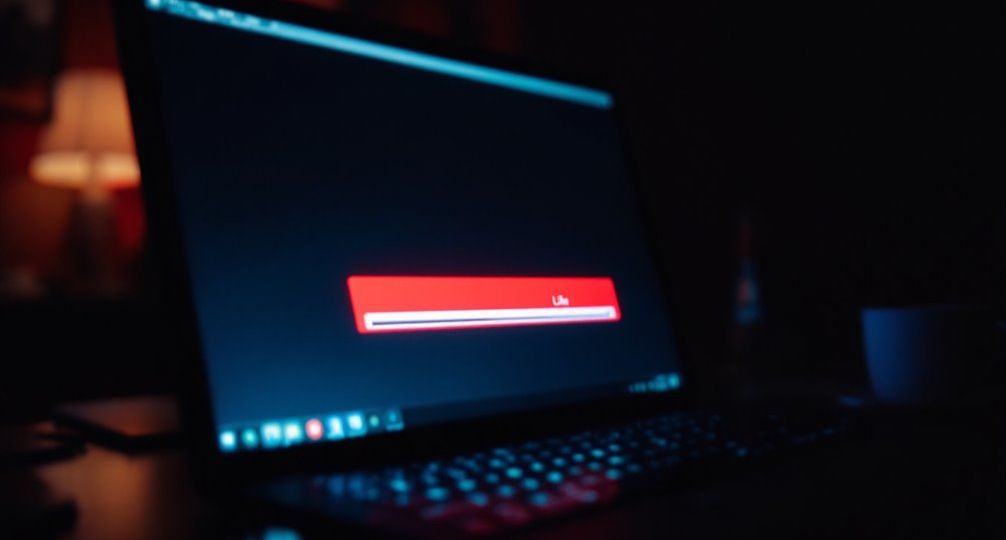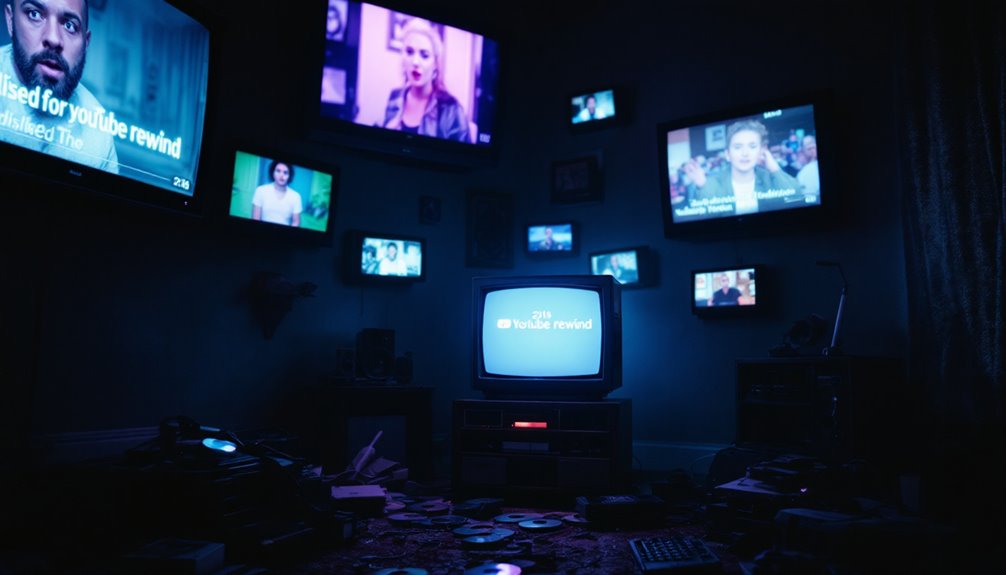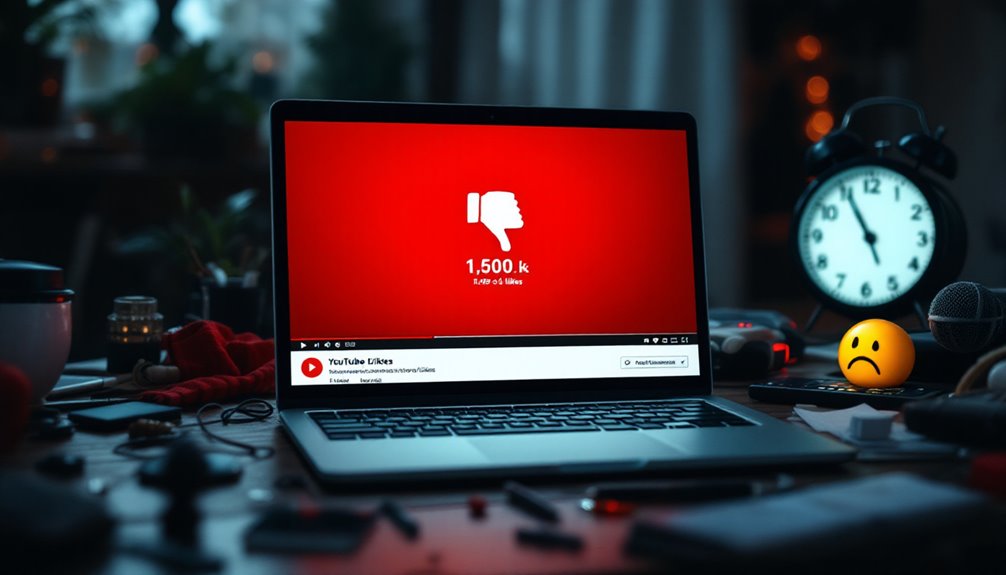
Most Disliked Video on YouTube
Imagine the dislike button as a storm cloud, casting shadows over YouTube’s terrain. YouTube Rewind 2018, the most disliked video, symbolizes a disconnect between creators and the platform. It gathered over 20 million dislikes, reflecting users’ dissatisfaction with its content. Analyzing this phenomenon reveals complex layers of community interaction and corporate strategies. What insights do these numbers hold for YouTube’s future dynamics? Let’s uncover the implications together.
Key Takeaways
- YouTube Rewind 2018 is the most disliked video on YouTube, with over 20 million dislikes.
- The video failed to resonate due to the exclusion of key creators and outdated trends.
- Released on December 6, 2018, it quickly received backlash from the YouTube community.
- The massive dislike count highlighted a disconnect between YouTube’s corporate image and viewer expectations.
- Meme culture and viral critique contributed significantly to its high dislike metrics.
Historical Context and Evolution of Disliked Videos

How did YouTube’s evolution of its dislike feature shape the platform’s environment for content creators?
The dislike evolution began in March 2010, replacing the five-star rating system. This shift allowed users to express video sentiment more directly, impacting creators’ engagement metrics and visibility. Initially, the most disliked videos were music-related, as seen with Justin Bieber’s “Baby” and Rebecca Black’s “Friday.” Over time, children’s content and video game trailers like “Call of Duty: Infinite Warfare” dominated dislike trends, reflecting evolving viewer expectations. Significantly, YouTube Rewind 2018 surpassed Justin Bieber’s “Baby” as the most disliked video on the platform within a week, showcasing the power of collective viewer disapproval. Political and social topics also attracted significant dislikes, indicating public sentiment on contentious issues.
The Rise of YouTube Rewind 2018
Although YouTube Rewind 2018 aimed to encapsulate the year’s defining moments, it quickly became a cultural flashpoint due to its disconnect with the platform’s community. Released on December 6, 2018, the video featured celebrities like Will Smith and referenced trends such as Fortnite and K-pop. Despite its intent, it failed to capture the essence of YouTube nostalgia and authentic community engagement, instead prioritizing advertiser-friendly content. The exclusion of key creators like PewDiePie and inclusion of outdated trends led to universal backlash. Garnering over 10 million dislikes in a week, it became the most-disliked video on YouTube. This marked a significant cultural moment, highlighting a growing divide between YouTube’s corporate image and the community’s expectations. YouTube Rewind was an annual video series that ran from 2010 to 2019, intended to reflect the platform’s community and culture.
Factors Contributing to High Dislike Counts

When analyzing high dislike counts on YouTube, several key factors emerge that contribute to this phenomenon.
One critical element is content coherence. Videos lacking structure or coherence, like YouTube Rewind 2018, often receive significant dislikes due to their disjointed nature. The YouTube Rewind 2018 video, which holds the title of most disliked video with 18.67 million dislikes, exemplifies how a lack of structure can lead to widespread disapproval.
Viewer expectations play a pivotal role as well. When content fails to meet anticipated standards, especially in high-profile releases, disappointment translates into dislikes.
Additionally, unpleasant viewing experiences and overused trends can drive negative reactions. Public sentiment, influenced by the negative reception of featured content or cultural insensitivity, further exacerbates dislike counts.
Audience demographics also matter; content not aligning with regional or age-specific preferences can suffer.
Ultimately, algorithmic promotions misaligned with user interests amplify dislike numbers.
Impact of Dislike Button Removal
Removing the dislike button from YouTube has sparked substantial debate, as its absence alters user interaction and content appraisal dynamics.
Dislike psychology plays an essential role in understanding viewer motivations, as the feature’s removal aims to protect users from harassment and prevent dislike targeting.
Without visible dislike counts, creators lose a direct feedback mechanism, potentially affecting content quality. This shift pushes creators to seek alternative feedback methods, such as comments, to gauge viewer satisfaction.
Viewers, meanwhile, may engage more critically with content, yet face challenges in evaluating video credibility without traditional metrics. This change is aimed at combatting cyberbullying and harassment, fostering a more civil engagement environment.
While the algorithm still considers dislikes, their invisibility may skew perceived popularity, raising concerns about transparency and the spread of misinformation, especially in tutorials.
Analysis of Dislike Statistics and Trends

While examining YouTube’s dislike statistics, interesting patterns emerge that reveal audience engagement dynamics. Dislike patterns vary across video categories, providing insights into user preferences and reactions. Videos such as “YouTube Rewind” frequently top the list, indicating a strong response to content perceived as inauthentic or poorly executed. Notably, “Everyone Controls Rewind” holds the record for the most dislikes, with 20.25 million, demonstrating the significant impact of viewer disapproval.
- Children’s Content: High dislike counts, including “Baby Shark Dance.”
- Music Videos: Particularly disliked, like Justin Bieber’s “Baby.”
- Trailers: Movies and games, such as “Sadak 2,” face significant backlash.
- View Dislike Ratio: High views don’t always translate to positive engagement.
- Time-Specific Trends: Dislikes can spike shortly after release, as seen with “YouTube Rewind 2018.”
These patterns highlight how audience engagement is nuanced, with dislikes serving as a critical feedback mechanism for creators.
The Role of Community Backlash
Examining YouTube’s dislike statistics uncovers not only patterns of audience engagement but also the significant impact of community backlash. Misuse of the dislike button for harassment and bullying became a trend on YouTube, leading the platform to hide the dislike count to protect creators. Community engagement often reflects viewer expectations, which, when unmet, lead to massive dislike campaigns. The YouTube Rewind 2018 video, criticized for ignoring popular creators, accumulated over 20 million dislikes, illustrating how essential it’s to align with community preferences. Similarly, the Sadak 2 trailer received over 13.6 million dislikes, with viewers expressing discontent over its production and casting choices. These examples highlight how videos can quickly become targets of backlash when they fail to resonate with their audience. This dynamic underscores the importance of understanding and meeting viewer expectations to maintain positive community engagement on YouTube.
Cultural and Cross-Platform Implications

When a video on YouTube becomes a viral sensation with a high dislike count, it often triggers a backlash that transcends the platform, influencing meme culture and sparking global discussions. LGBTQ+ young people face unique challenges in accessing health resources, and this underscores the importance of inclusive and equitable digital platforms. You can observe how this phenomenon not only affects public perception but also drives engagement across social media, where users share and create content based on the video’s notoriety. This widespread reaction underscores the complex dynamics of global audience engagement, where cultural and cross-platform interactions amplify both content’s reach and its contentiousness.
Viral Sensation Backlash
Despite the potential for viral content to captivate audiences, it often invites backlash with significant cultural and cross-platform implications. Public sentiment plays a vital role in determining the content’s reception. When content quality fails to meet audience expectations, it can lead to widespread criticism, as seen with YouTube Rewind 2018. The video’s exclusion of popular figures and trends resulted in over 20 million dislikes. Cancel culture has emerged as a tool for holding individuals accountable for offensive behavior, further intensifying backlash against content that is perceived as harmful or insensitive.
Key factors driving backlash include:
- Public outrage and criticism
- Cultural insensitivity and appropriation
- Cross-platform amplification
- Social and career consequences
- Impact on public figures and brands
Cultural insensitivity, exemplified by incidents like “Woah Vicky,” can exacerbate negative reactions. Such backlash not only affects individual creators but also has broader implications for social media platforms as they navigate these complex environments.
Meme Culture Influence
While meme culture might seem frivolous at first glance, its influence on video dislikes reveals significant cultural and cross-platform implications. Meme evolution has played an essential role in shaping the narrative around YouTube Rewind videos, turning dissatisfaction into viral critique. Dislike campaigns, driven by creators like PewDiePie, highlight how strategic engagement with meme culture can manipulate platform metrics. These campaigns often reflect a broader cultural divide, such as the clash between corporate-driven and community-driven content. The 2018 YouTube Rewind video became the most disliked video on the platform, showcasing the power of memes and collective viewer sentiment. Cross-platform tensions, as seen in the conflict between TikTok and YouTube communities, further illustrate how meme culture transcends individual platforms, affecting video reception and dislike ratios. As meme culture evolves, it continues to redefine how audiences interact with digital content across platforms.
Global Audience Reaction
Meme culture’s impact on video dislikes lays the groundwork for understanding the global audience’s reaction to YouTube content. Audience preferences are diverse, showcasing the complexity of content diversity.
The 2018 YouTube Rewind video, for instance, amassed 9.5 million dislikes, highlighting a disconnect in audience engagement. Similarly, Justin Bieber’s “Baby” reveals polarized opinions with 12.4 million dislikes.
Cultural nuances further shape reactions:
- “Chal Chal Gurram” shows cultural differences with over 5 million dislikes.
- Brazilian music videos face backlash due to moral sensitivities.
- Educational content in multiple languages encounters linguistic barriers.
- Children’s videos, while popular, often receive mixed feedback.
- Cross-platform controversies influence dislike counts across social media.
Analyzing these patterns provides insights into evolving global content consumption.
Future of YouTube’s Dislike Dynamics

As YouTube continues to evolve, understanding the future of its dislike dynamics becomes essential. The shift to hide public dislike counts stems from dislike psychology and aims to foster a healthier creator environment. Internal research highlighted concerns over creators’ mental health, targeting stress, and harassment. This change aligns with a broader trend in social media where platforms are increasingly taking measures to address mental health issues among their users. While this change seeks to build viewer trust by promoting inclusivity, it raises questions about content evaluation. Users valued dislike counts as a quick quality check, and their removal might obscure insights into video quality and authenticity. Despite criticisms, dislikes don’t impact YouTube’s algorithm considerably, as they don’t alter video recommendations. Creators must rely on like-to-dislike ratios for performance insights, while users might seek alternative methods to gauge video trustworthiness.

